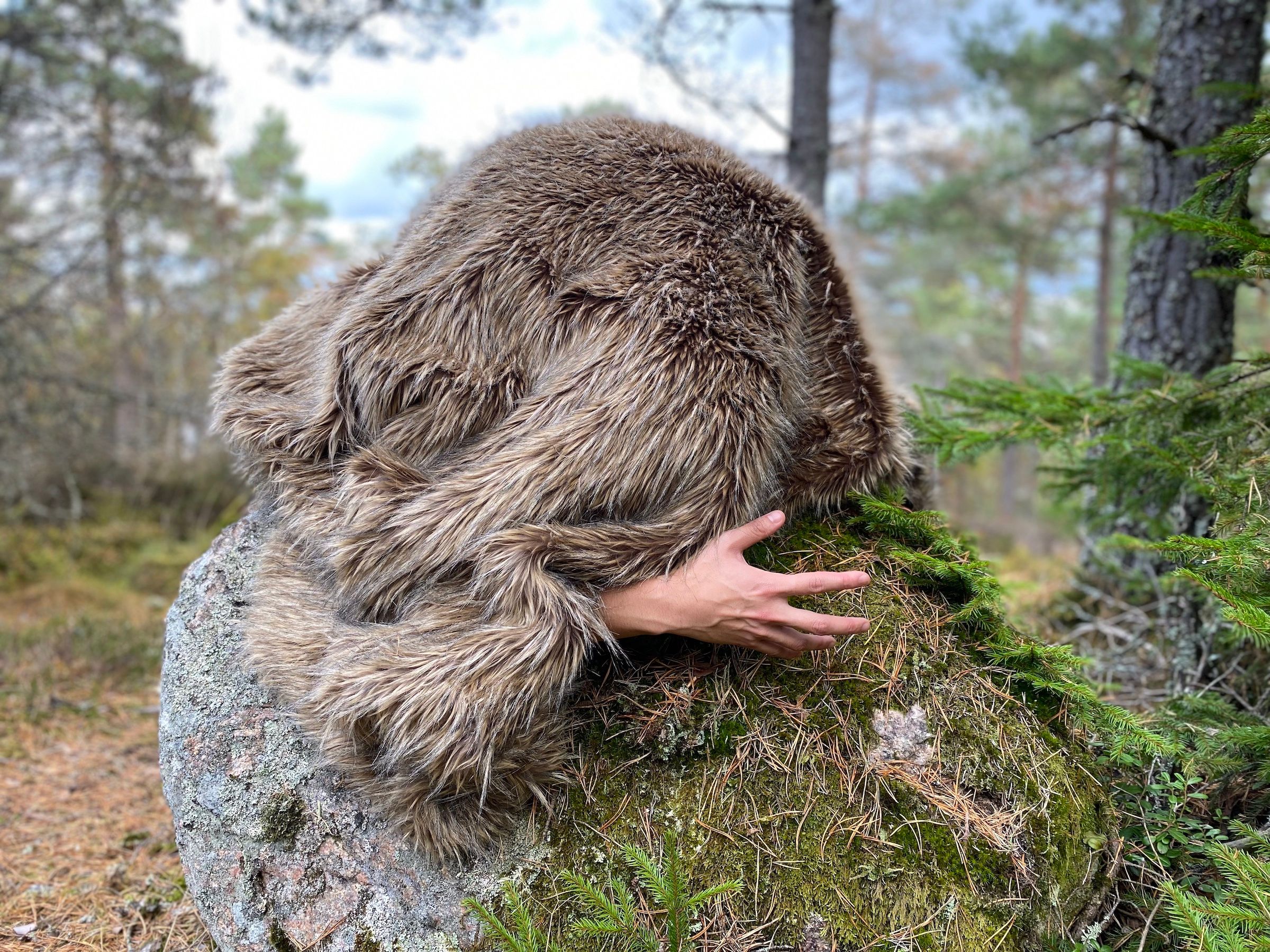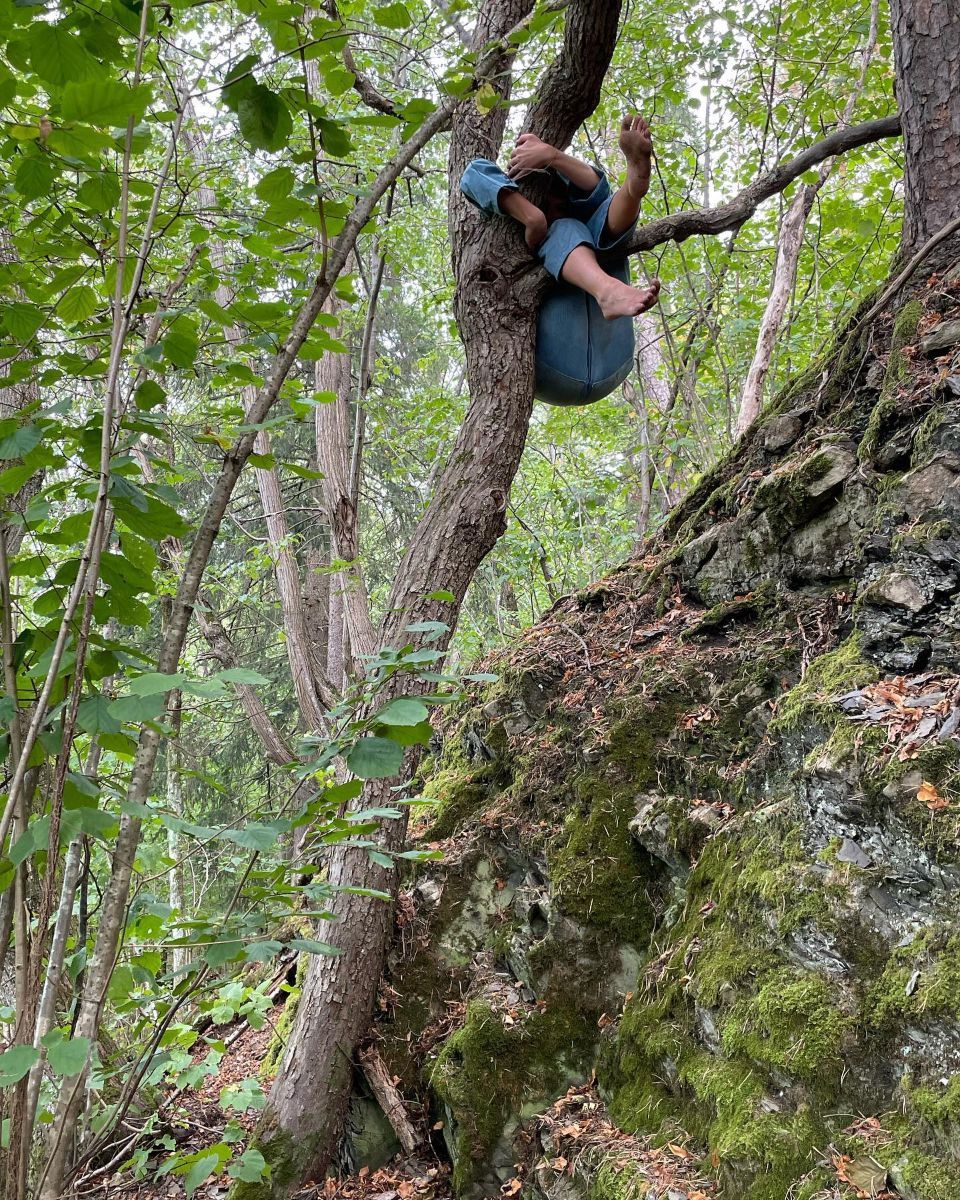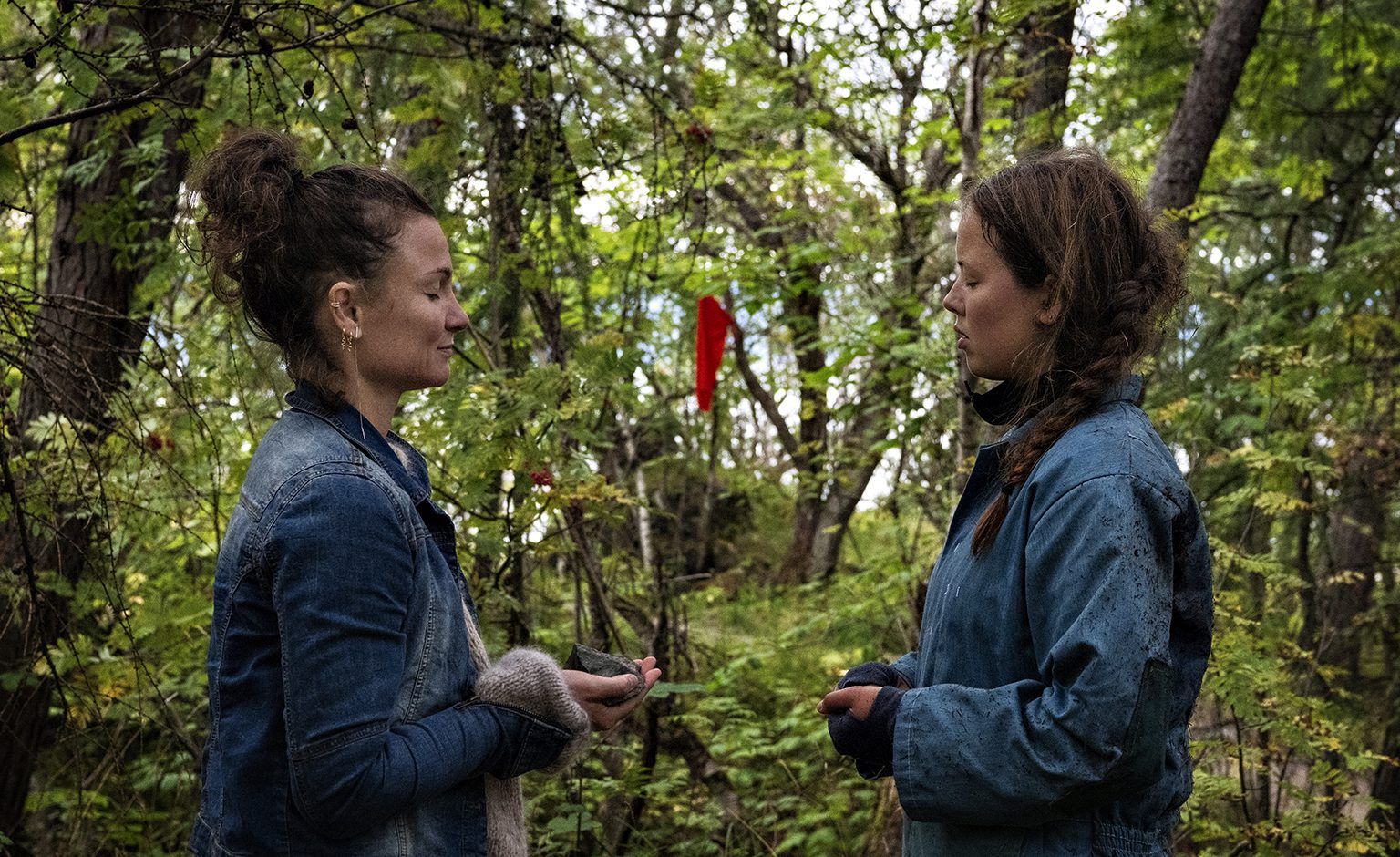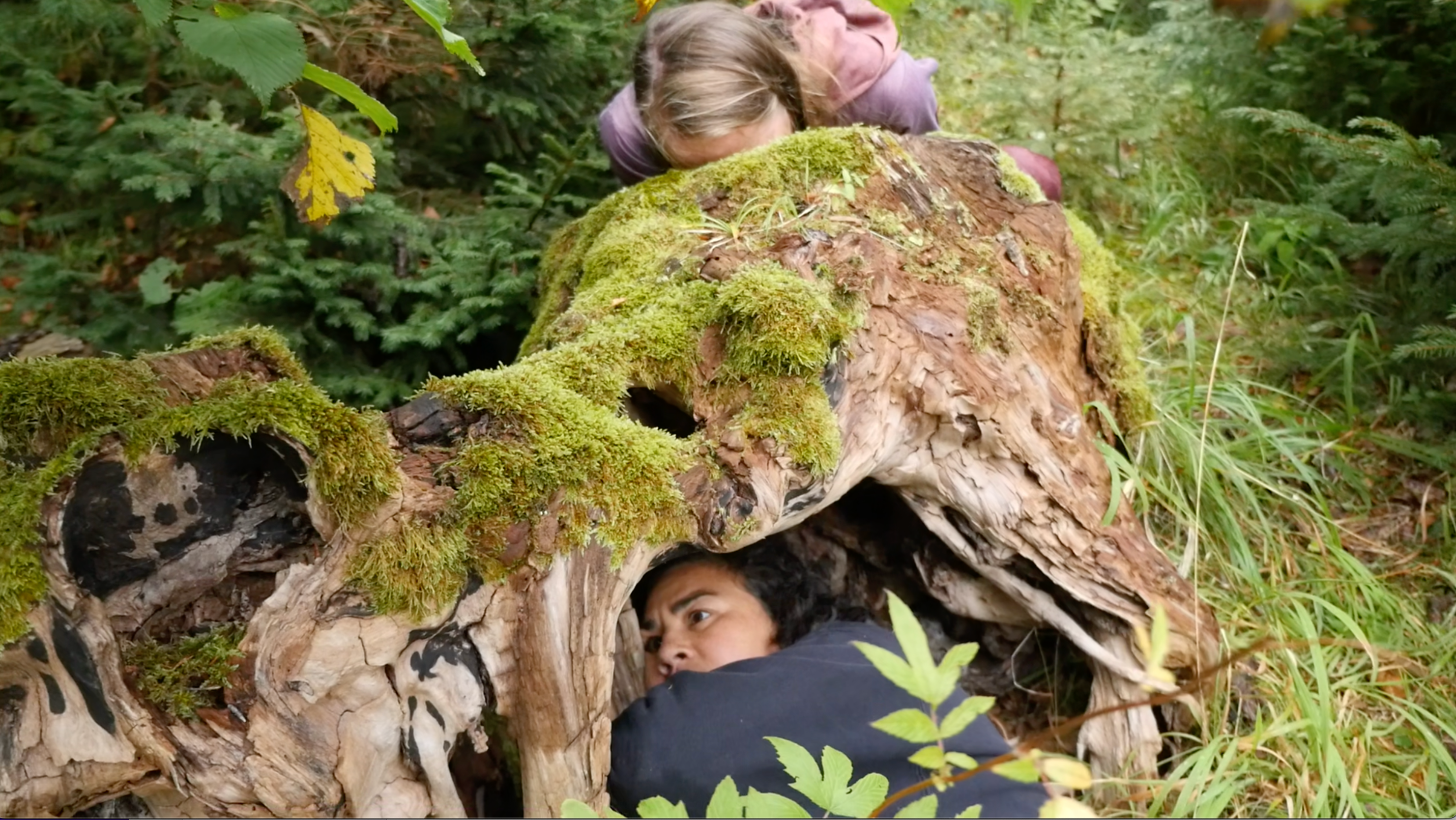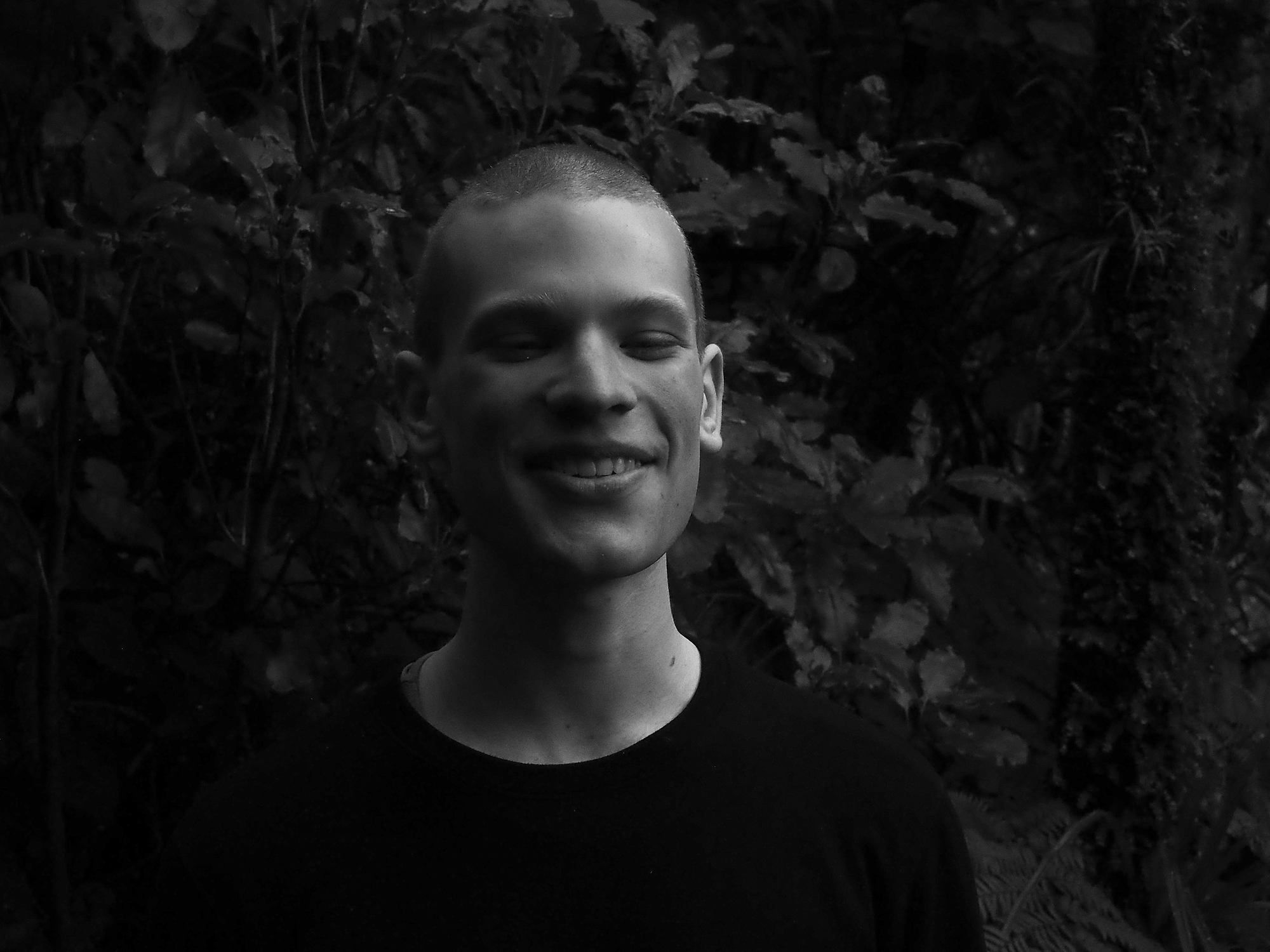What Do You Do with the Mad That You Feel? BodyCartography Project’s Resisting Extinction
In Resisting Extinction, the audience was invited to collectively experience ecosomatic practices for living and dying in Te Whanganui-a-Tara’s Central Park. Amit Noy, a performer in this site-specific event, speaks to creators BodyCartography Project on making work in times of ecological grief.
I lie askew on the wet dirt and move in geographic time. (Forget years – I sync up with the rhythm of the tectonic plates.) I press my mouth into the ground and suck up damp mulch. My wet cheek stretches as I groan; I send the vibration from my gut to the top of the canopy. Tongue outstretched, I beckon another way of being. I am in Central Park, Te Whanganui-a-Tara, performing in BodyCartography Project’s Resisting Extinction.
BodyCartography Project is an artistic partnership between Olive Bieringa (born in Te Whanganui-a-Tara) and Otto Ramstad (born in Minneapolis). Now based in Oslo, they have spent 20 years creating work that engages with our vital materiality in urban, wild and social landscapes.
Presented in Te Whanganui-a-Tara in February as part of the 2023 Performance Arcade, Resisting Extinction is a three-part performance that offers strategies for living and dying on a damaged Earth. As a performer in Resisting Extinction, I took part in a three-week rehearsal process that culminated in a season of nine performances. During the penultimate day, I spoke with Olive Bieringa and Otto Ramstad. This is the edited transcript of our conversation.
Amit: What brought you to Resisting Extinction, and what is it that you want the work to do?
Olive: As dancers, we work from a belief in movement as transformation. We know that when you move, shit changes. You change yourself.
Otto: We’re trying to share what it’s like to be in a dance, and not just show dance. This seems to be of really big value. Maybe the most profound part of dance is dancing.
Olive: We want the work to challenge this hegemony of seeing, culturally, that we live inside of. That’s how people so often think about dance – that they’re seeing something cool. Of course, they’re also seeing something kinaesthetic that brings them into their body, but what would it be to really have them focus on feeling a dance, or feeling how movement enlivens something? In [an earlier work we made called] Closer, there’s a 13-minute section in the dark, where you’re just hearing and feeling the dance, and the audience is distributed throughout the space.
When we first started working on Resisting Extinction six years ago, I think people’s level of climate denial was much louder than it is now. The proposition of the work has not changed much, but it has had to meet the changing reality of what’s been happening. This question of, what can we bring to the conversation of living on the planet at this moment? As movers, as movement artists, what can we contribute to that conversation?
Photo credit: Otto Ramstad
Amit: What can we bring? What is dance and choreography able to offer that other forms can’t?
Otto: Do you know the show Mr Rogers? It’s a kid’s television show from the US, from the 1980s. Mr Rogers would say things like, “What do you do with the mad that you feel?” He was addressing what it feels like to be affected by your emotions. I think that that’s part of what we can bring.
It’s so easy in the climate scenario to get hung up on solutions. What are we [the dancers in the show] going to do to make this better? The answer is probably nothing. The personal responsibility for the climate crisis has been put on us as a kind of smokescreen, to divert from big corporations and the inactions of governments. It’s like, you did your recycling, you’re cool, you’re done. Or not – you haven’t done enough. It can go either way, conveniently. What we’re doing is giving people a place to process their experience of the climate crisis, alongside others. It seems like the most appropriate goal we can have – in terms of your feelings, but also to bring people into the wonder of the natural world as a kind of antidote, as well as a fire to show up in a different way.
Olive: I don’t feel like, as dancers, we can’t do anything. I don’t feel that at all. The work asks for a kind of active citizenship – an active listening, and a willingness to be in the process. These are questions of collaborations and listening that I think we’re quite good at as artists, as dancers. We’re also quite good at dealing with complexity without having to name a singular answer. We don’t necessarily have the answers, but we have a bunch of processes we can bring people into.
The personal responsibility for the climate crisis has been put on us as a kind of smokescreen, to divert from big corporations and the inactions of governments. It’s like, you did your recycling, you’re cool, you’re done. Or not – you haven’t done enough.
Amit: I like that the piece gives us access to therapeutic-adjacent practices or processes, without becoming solipsistic or self-involved. My experience of the work evades the differentiation between secular and religious ways of being. When I’m performing the work, I don’t know where I sit within that field, and that’s a very cool feeling to have. This is especially true of the first part of Resisting Extinction, which you call a weather walk. It’s a one-on-one event between a performer and an audience member.
I experience the weather walk as a practice of fluid storytelling that darts between linguistic and embodied improvisation to tell an open-ended story about our climate. Dance, conversation, knowledge sharing, somatic experience and other embodied actions have all been a part of my weather walks. I think my job in this part of Resisting Extinction is to bring the audience member into ethical, political and sensual entanglement with the bush we are walking through together.
Some memories from the nine weather walks I did: howling together from the roof of a canopy; lying down side-by-side on the soaking ground during a summer rainstorm; walking together through the bush with our eyes closed; talking about grief, decomposition, tsunamis and fruit. I closed almost every weather walk by inviting my audience member to place their hands in the gently running water of the stream with me, eyes closed, for one minute.
Can you talk about the importance of the one-on-one format to the weather walk?
Olive: The one-on-one format allows us to be with an audience member and guide them in a different way: to open up the spectrum of their sensory experience. They come into the experience of being inside a dance, without dancing.
All of the one-on-one works raise questions of how we audience, or how we are audiencing. In the weather walk, the audience follows a performer through the landscape, and they get to choose how close or how far away they want to be. They are actively working the muscle of audiencing – they are making it a verb.
I think my job in this part of Resisting Extinction is to bring the audience member into ethical, political and sensual entanglement with the bush we are walking through together.
Otto: The one-one-one format highlights the co-responsibility of the performance situation. Being asked to be in a dialectical relation highlights the responsibility you also hold when you sit in the audience ‘chair’. As an audience member, you are a part of the ecology of the artwork.
Olive: In the weather walk, we’re asking people to attend to movement and the kinaesthetic experience, as well as to literally move through the landscape by taking a walk. [We also] discuss biology and ecology, weather systems, politics and emotional feelings, and play with therapeutic or ritual protocols… there’s all of these layers inside the work, and different performers bring out different aspects of the material.
Otto: We’re looking at dance as a kind of puzzle behaviour, a playing-with. You’re engaging with material in a speculative, exploratory way. I think that people in the science field are also dancing, in that regard.
Photo credit: Arne Hauge
Amit: Talk to me about the final part of the piece, which you call a “dying and decomposing practice”. It’s a speculative, embodied practice where the audience has to collectively choose a way to die – such as drowning, freezing or dehydration. You then invite them to lie down, close their eyes, and listen to a narration of that death, and the subsequent process of decomposition.
The first time I did a dying and decomposing practice, it was a blazing hot afternoon, and I was sprawled on the beach. The water was lapping at my legs as you led me through the process of imagining my own death by drowning. You said it would take 18 months after death for all my flesh and organs to decompose; 18 months until I became simply bones floating in water.
Olive: The dying and decomposing practices came out of a curiosity around the physiological process of death in different climate scenarios. It’s an attempt to understand the process of decomposition in different landscapes. We’re thinking about what presence is, in the moment of absence. They are somatisations (a practice of feeling, rather than imaging through the frontal lobe). People just lie down and listen, and I read to them. They have an experience in their cells: they don’t have to cognitively understand what’s happening, but, in their action of giving in to gravity and receiving the words, they allow their cells to have their own experience. Often people relate this practice to the title Resisting Extinction: that the process of resisting extinction is something that happens at a cellular level.
Photo credit: Otto Ramstad
Amit: Something that struck me from the beginning about this project is the containment of the audience size. Since the weather walk happens one on one, and the work contains nine performers, there is a cap of nine audience members per show. What’s beautiful about Resisting Extinction’s size is that it’s so antithetical to current cultural values, where something is evaluated in terms of how many people see it.
Otto: A founding ethos of BodyCartography is to make dance embedded, both in official and unofficial contexts. Body cartography: it’s putting ‘body’ into the process of making sense of our surroundings. For our audiences, maybe we’re giving them a deeper familiarity with places, or a deeper sense of permission. The scope of normativity in human movement is very narrow. Sitting, standing, lying down… There are specific locations for specific behaviours: the skate park, the playground, the gym, the nightclub. These are strictly choreographed architectural containers. We’ve actively choreographed our environment to the degree that it’s now choreographing us. We’re about expanding what is possible.
Olive: How do we invite everybody to play in this space?
Resisting Extinction ran from 22 to 26 February at Central Park, Te Whanganui-a-Tara, as part of the 2023 Performance Arcade.
Watch a video of the performance below:
Header image credit: Maria Lothe
